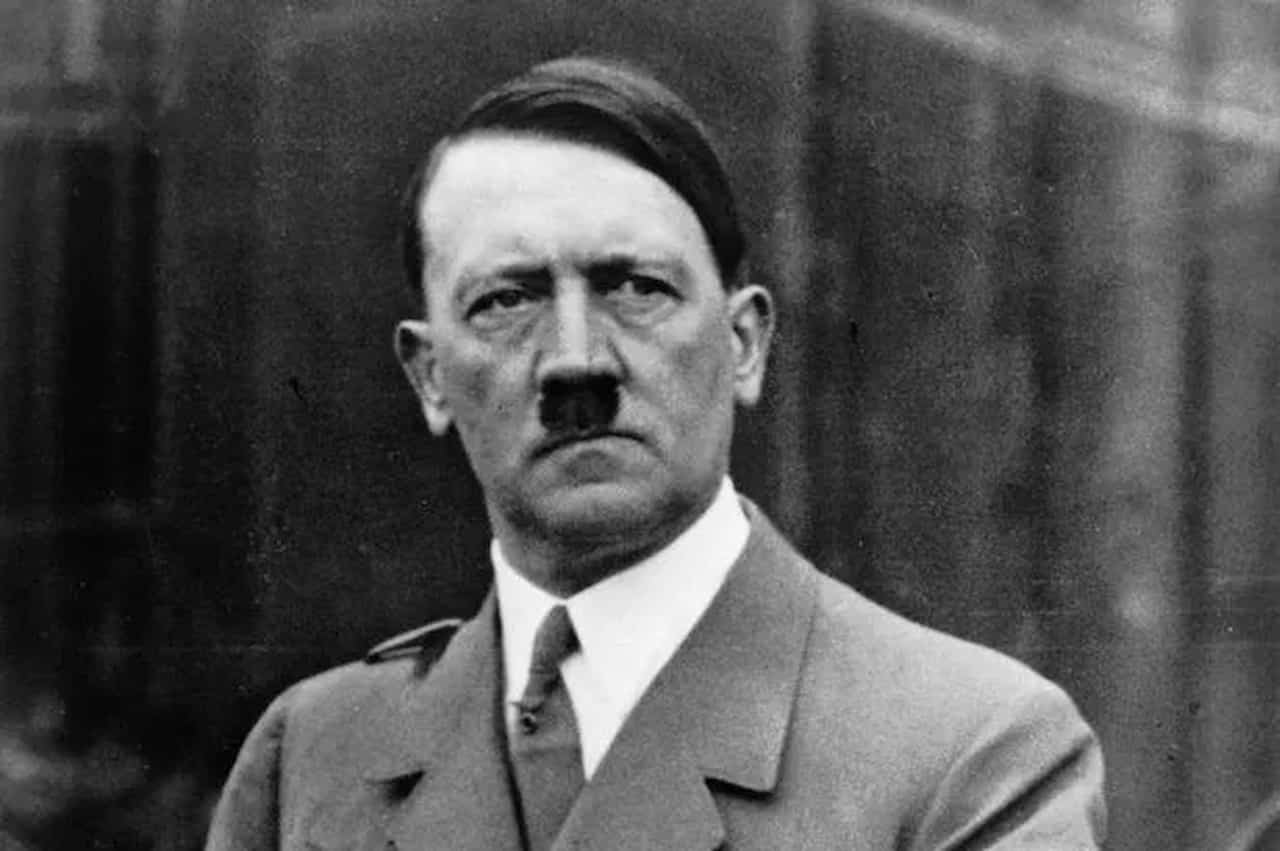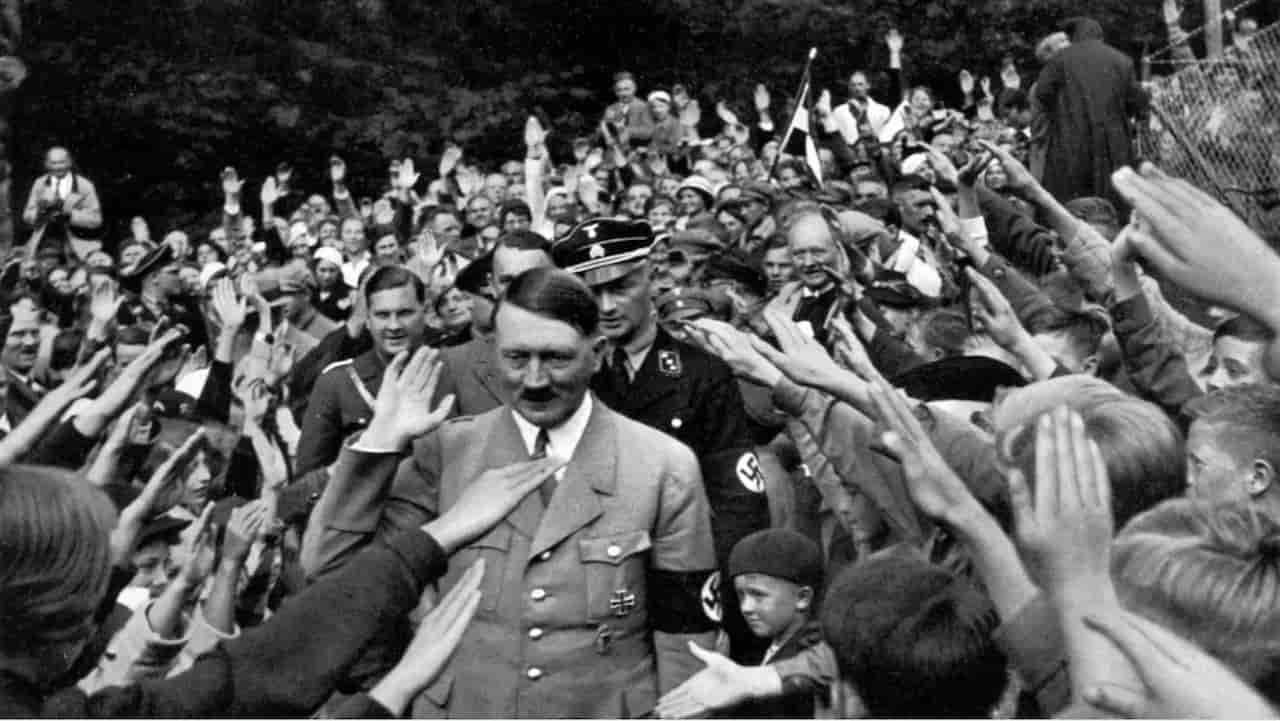Historical Infamy: Adolf Hitler’s Wealth and Plundered Assets
Adolf Hitler was one of the most infamous and destructive figures of the 20th century. As the leader of Nazi Germany from 1933 to 1945, he orchestrated World War II in Europe and the Holocaust, resulting in the deaths of millions. This blog post will explore Hitler’s life, from his early years to his rise to power and eventual downfall.
Who was Adolf Hitler?
Adolf Hitler was born on April 20, 1889 in Austria. He grew up to become the leader of the Nazi Party and Chancellor of Germany from 1933-1945. Hitler was a fascist dictator who promoted the racist ideology of Aryan supremacy.
He started World War II by invading Poland in 1939. Hitler was responsible for the genocide of over 6 million Jews in the Holocaust, as well as the deaths of millions more. He committed suicide in 1945 as Germany was losing the war.
| Category | Details |
|---|---|
| Full Name | Adolf Hitler |
| Birth Date | April 20, 1889 |
| Birthplace | Braunau am Inn, Austria |
| Death Date | April 30, 1945 |
| Age at Death | 56 years |
| Nationality | Austrian-born German |
| Physical Attributes | Height: 5 feet 9 inches (175 cm), Brown hair, Blue eyes, Slim build |
| Occupation | Leader of Nazi Party, Chancellor, Dictator of Germany |
| Political Ideology | Fascism, Aryan Supremacy, National Socialism |
Early Life and Background
Hitler was born in Braunau am Inn, Austria, to Alois Hitler and Klara Pölzl. He was the fourth of six children, though only he and his sister Paula survived adulthood.
Hitler’s father was a strict customs official, while his mother was more caring and nurturing. As a child, Hitler dreamed of becoming an artist. He was closer to his mother and devastated when she died of breast cancer in 1907 when he was 18 years old.
Hitler struggled in school and dropped out at age 16. He moved to Vienna in 1908, hoping to attend art school, but the Academy of Fine Arts rejected him twice.
Hitler lived a bohemian lifestyle in Vienna for several years, selling postcards and paintings to make ends meet. During this time, he developed many of his anti-Semitic and nationalist views that would later shape his political ideology.
In 1913, Hitler moved to Munich, Germany. When World War I began in 1914, he volunteered for the German Army. Hitler served as a dispatch runner on the Western Front and was awarded the Iron Cross for bravery. Germany’s defeat in WWI left Hitler feeling betrayed and resentful, shaping his nationalist views.
Rise to Power
After WWI, Hitler joined a small far-right political group that eventually became the Nazi Party. He quickly rose through the ranks due to his powerful speaking abilities. In 1923, Hitler attempted a failed coup in Munich known as the “Beer Hall Putsch.” He was arrested and spent nine months in prison, where he wrote his manifesto “Mein Kampf.”
In the 1930s, Hitler exploited Germany’s economic troubles to gain popular support. The Nazi Party won elections, and Hitler was appointed Chancellor in 1933. He quickly consolidated power, outlawed other parties, and established a dictatorship. Hitler began rearming Germany and implementing anti-Semitic policies.
World War II and the Holocaust
In September 1939, Hitler invaded Poland, starting World War II in Europe. German forces conquered much of Europe in the early years of the war. Hitler ordered the invasion of the Soviet Union in 1941 and declared war on the United States after Japan attacked Pearl Harbor.
Under Hitler’s leadership, Nazi Germany systematically murdered 6 million European Jews in the Holocaust. Millions of others deemed “undesirable” were also killed, including Roma people, Slavs, disabled people, and homosexuals. Hitler approved the use of concentration camps and death camps to carry out mass murder on an industrial scale.
As the tide of the war turned against Germany, Hitler became increasingly paranoid and erratic. He refused to consider surrender even as Soviet forces approached Berlin in 1945. On April 30, 1945, Hitler committed suicide in his Berlin bunker alongside his new wife, Eva Braun, as Allied troops closed in on the city.
Personal Life and Relationships
Hitler cultivated an image as a man solely devoted to leading Germany. However, he had a long-term relationship with Eva Braun, whom he married shortly before their joint suicide in 1945. Hitler never had any children. He was very close to his mother but had a poor relationship with his strict father.
Hitler lived a relatively isolated personal life focused on politics and power. He was a vegetarian and abstained from alcohol. Hitler had few close friends and grew increasingly paranoid and distrustful of those around him as the war progressed.
Professional Career
Before entering politics, Hitler struggled as a painter in Vienna. During WWI, he served as a corporal in the German Army. After the war, Hitler’s career was entirely in politics as he rose through the ranks of the Nazi Party to become Germany’s leader. As Führer, Hitler was an authoritarian ruler who controlled all aspects of the government and military.
Hitler was known for his powerful, charismatic speeches that captivated large crowds. He was skilled at manipulating public opinion through propaganda. As a military leader, Hitler often overruled his generals, especially later in the war, leading to strategic blunders.
Age and Physical Characteristics
Hitler was born in 1889 and died in 1945 at age 56. He was 5 feet 9 inches (175 cm) tall and had a slim build for most of his life. Hitler had brown hair and blue eyes. His most distinctive physical feature was his small mustache. In his later years, Hitler developed tremors that may have been symptoms of Parkinson’s disease.
Net Worth and Finances
As ruler of Germany, Hitler had access to enormous state resources, though his wealth remained separate. His main source of income was royalties from his widely distributed book Mein Kampf. Hitler’s net worth at his peak is estimated to have been about $150 million in today’s dollars.
| Aspect | Details |
|---|---|
| Primary Income | Royalties from “Mein Kampf” |
| Estimated Wealth | Approximately $150 million in today’s dollars |
| Lifestyle | Lived modestly, did not flaunt wealth |
| Major Properties | Berghof mountain retreat in Bavaria, apartments in Berlin and Munich |
| Taxes | Stopped paying taxes after becoming Chancellor |
Hitler lived modestly compared to other dictators and did not flaunt personal wealth. He used his money to purchase several properties, including the Berghof mountain retreat in Bavaria. After becoming Chancellor, Hitler stopped paying taxes. His exact wealth at the time of his death is unknown.
Property and Investments
Hitler’s primary residence was the Berghof in the Bavarian Alps, which he renovated extensively. He also had apartments in Berlin and Munich. Hitler invested in art and amassed an extensive collection, much of which was looted from conquered territories. He did not make many traditional financial investments, focusing on building Germany’s military and infrastructure.
The Nazi Party received extensive funding from wealthy industrialists and supporters. Once in power, Hitler fully controlled state funds to finance his military buildup and other initiatives. He implemented economic policies to make Germany self-sufficient and build up the arms industry.
Funding and Financial Support
As leader of the Nazi Party and later Germany, Hitler received extensive funding from wealthy industrialists and supporters. German corporations made significant donations to Hitler and the Nazi cause. The party also raised money through membership dues and rallies.
Once in power, Hitler had access to state funds and resources to implement his policies and fund the war effort. He instituted economic reforms and public works projects to reduce unemployment. Hitler directed much of Germany’s economic output toward rearmament and military production.
Contact Information
Hitler died in 1945, so he has no current contact information. During his lifetime, his primary offices were at the Reich Chancellery in Berlin. He communicated with the public mainly through radio broadcasts and large rallies. Hitler did not use social media, as it did not exist then.
Critical Events in Hitler’s Rise to Power:
1919 – Hitler joins the Nazi Party 1923 – Failed Beer Hall Putsch coup attempt
1933 – Appointed Chancellor of Germany 1934 – Becomes Führer after the death of President Hindenburg 1935 – Nuremberg Laws stripped Jews of citizenship 1938 – Annexation of Austria (Anschluss) 1939 – Invasion of Poland starts World War II 1941 – Invasion of Soviet Union; Holocaust begins 1945 – Hitler commits suicide as Soviets reach Berlin
Legacy and Impact
Adolf Hitler’s actions resulted in the deaths of millions and reshaped the map of Europe. His Nazi ideology promoted racism, antisemitism, and extreme nationalism. The horrors of the Holocaust serve as a stark reminder of the dangers of hatred and authoritarianism.
World War II led to the decline of European global dominance and the rise of the United States and Soviet Union as superpowers. The war’s aftermath saw the division of Germany and the start of the Cold War. The newly formed United Nations aimed to prevent future conflicts on such a massive scale.
Hitler remains one of the most widely studied figures in history. His rise to power serves as a warning about how extremist ideologies can subvert democratic systems. Holocaust education continues to be an essential part of teaching about human rights and genocide prevention.
Conclusion
Adolf Hitler’s legacy is one of unparalleled destruction and suffering. From humble beginnings, he rose to command one of the most powerful war machines in history. Hitler’s racist ideology and ruthless quest for power led to World War II and the systematic murder of millions in the Holocaust.
While Hitler amassed significant personal wealth as Germany’s leader, his true impact was measured in lives destroyed rather than money earned.
The fascist dictatorship he created serves as a cautionary tale about the fragility of democracy and the dangers of extreme nationalism. More than 75 years after his death, the name Adolf Hitler remains synonymous with evil and the worst atrocities of the 20th century.



